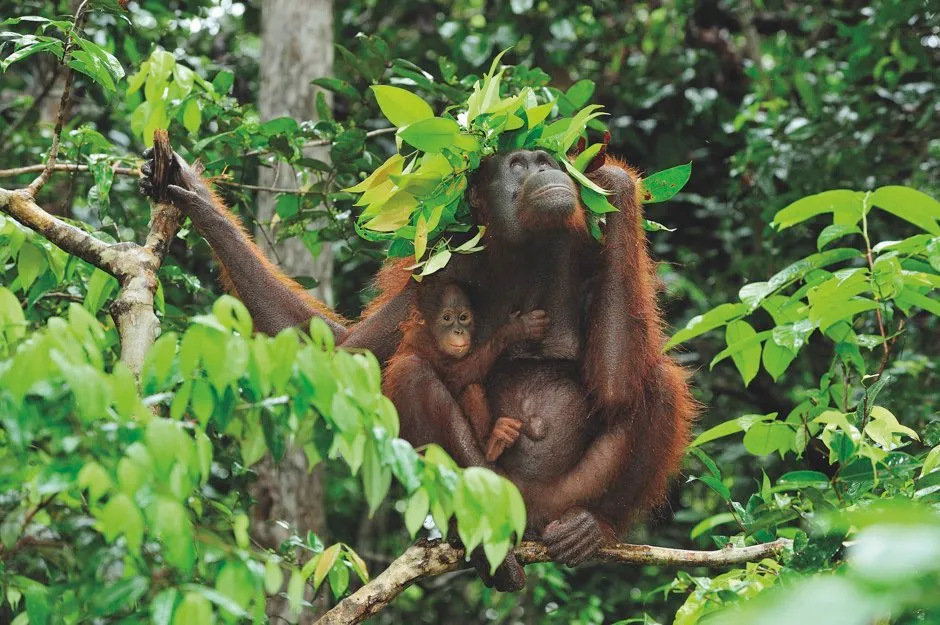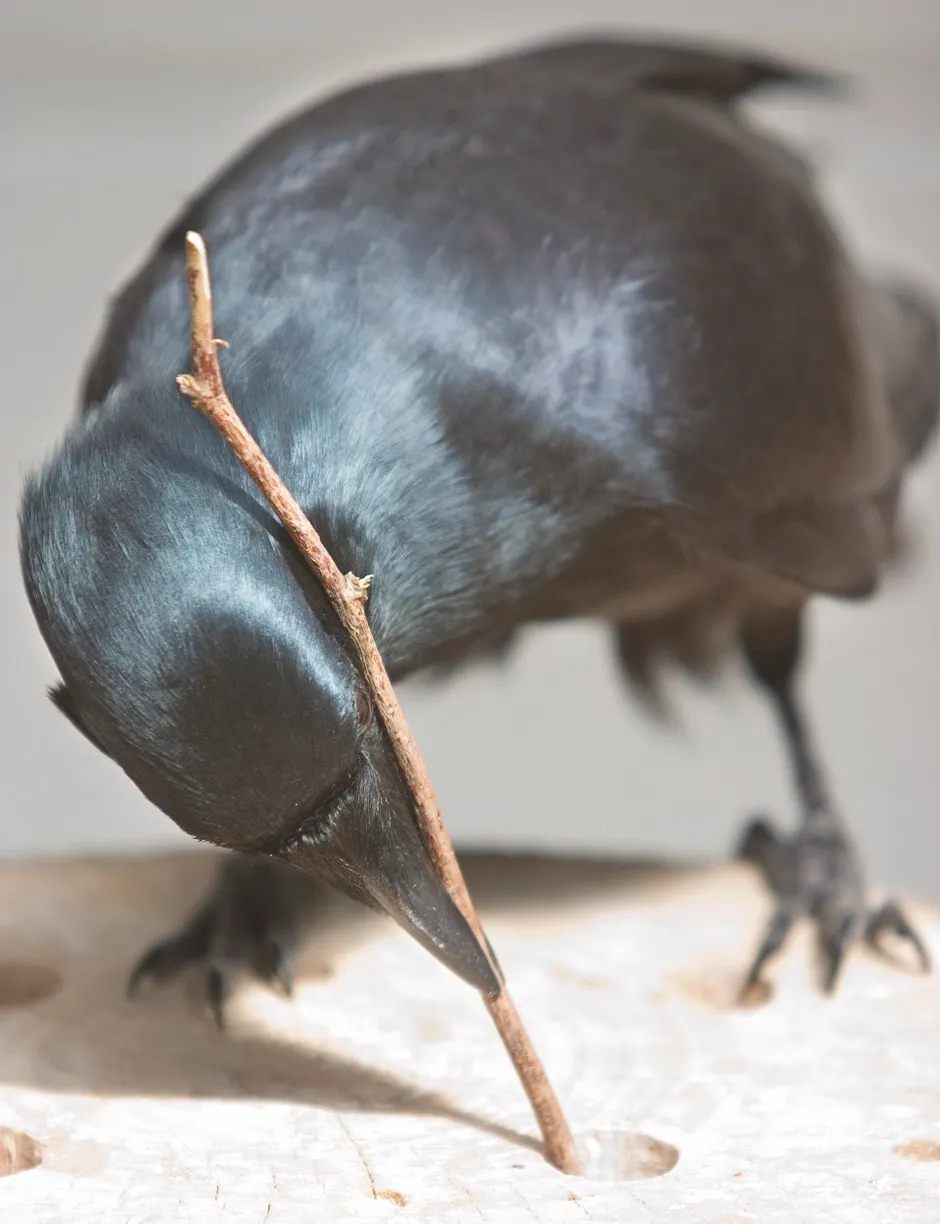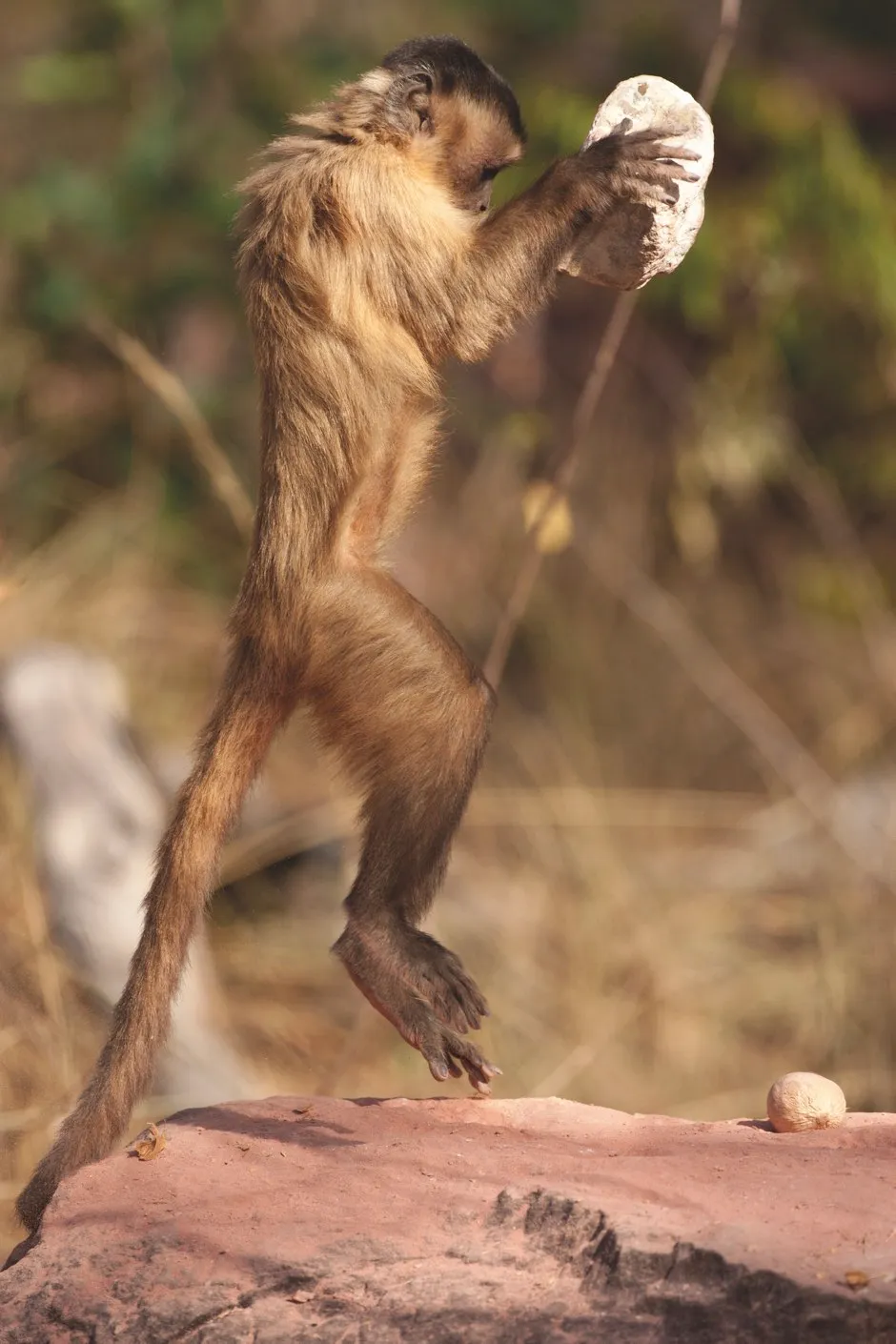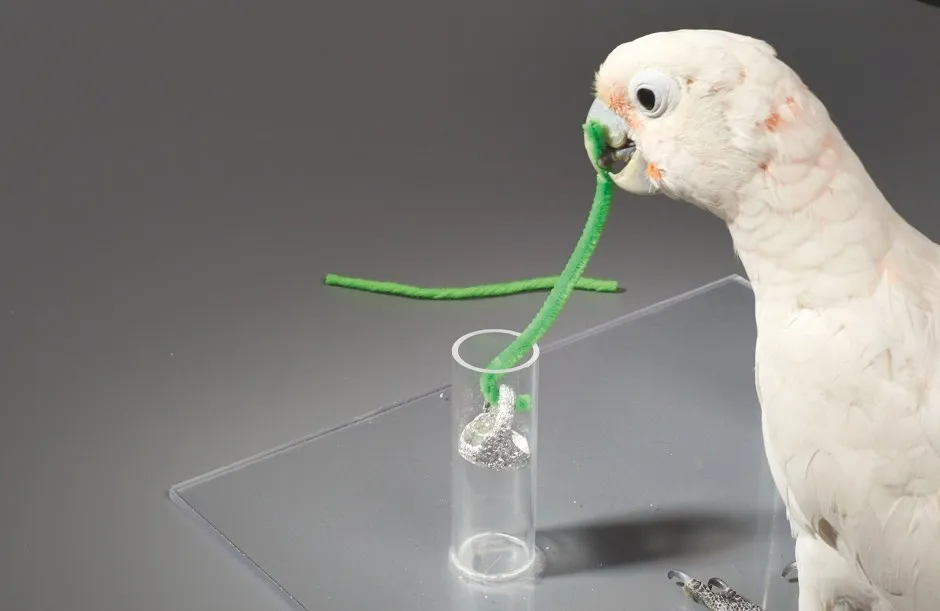We think we’re pretty smart, with our knives and forks, but there are some clever creatures out there that use inanimate objects to help get their food in their tummies. Here are five extraordinary animals using tools to dig out their dinner.
1
Bornean orangutan

When it rains, we humans get out our umbrellas. When it rains at the Camp Leakey research facility in Borneo, the orangutans make their own.
Photographer Thomas Marent was observing this mother and baby when the skies opened. While taking out his umbrella to protect his camera, he saw the mother start to collect leaves from the tree.
“She formed a kind of hat or shelter,” he says. “She was sitting this way for about 20 minutes.”
Wild orangutans have also been observed using sticks to get seeds out of fruit and for measuring the depth of water to establish whether it’s safe to cross. However, researchers think we probably see even more innovative behaviours in captive orangutans, because in the wild they learn from their parents and rarely explore or come across new problems to solve.
Orangutans at San Diego Zoo famously escaped from their enclosure nine times, once using a crowbar. If that’s anything to go by, they’re truly some of the smartest – and sneakiest – of the primates.
Read more:
- What’s the oldest invention that we still use today?
- Orangutans hook up tool-based solutions quicker than human kids
2
New Caledonian crow

In 2002, Betty the New Caledonian crow captured attention worldwide by bending a wire into a ‘hook’ and using it as a tool to extract food from a tube. Some scientists took this as a sign of superior intelligence, claiming Betty was problem-solving in a spontaneous way.
However, further studies showed that wild crows – like the one in this photo – are just as adept at making hooks, but from twigs. Research suggests that the crows’ tool use comes from watching other crows initially, but they also seem to commit the shape of the hooks to memory.
“Like having a phone number in your mind and then using the memory of that phone number to make a call,” suggests Dr Nathan Emery, a crow expert at Queen Mary University of London (QMUL). If this is what’s happening, then crows are more creatures of habit than creative thinkers.
3
Bearded capuchin monkey

Some bearded capuchins crack cashew nuts with rocks, placing the nuts on hard surfaces that they use as anvils. Primatologist Dr Lydia Luncz from the University of Oxford says it’s a trick that’s been passed from one generation to the next, although not all capuchin communities do it.
Like in humans, tool use is cultural. Luncz studied a group of bearded capuchins at Brazil’s Serra da Capivara National Park. Here, as well as using stones for nut-cracking, they use them as a shield against toxic substances that spurt out of the cashew shells.
The monkeys also use stones to dig for tubers and spiders. In some groups, females use stones to flirt, throwing them at males that they want to mate with in order to get their attention.
Read more:
4
Orange-dotted tuskfish
Fish aren’t generally known for their intellect. But the surprising behaviour of ‘Percy’, an orange-dotted tuskfish living in Australia’s Great Barrier Reef (and star of 2017’s Blue Planet II), has got scientists thinking.
While not sophisticated enough to use a stone as a hammer, like some monkeys do, he did hold clams in his mouth and carried them to a hard coral. He then used the coral as an anvil to smash open the shellfish, releasing the food within.
Experts are still debating whether or not this constitutes real tool use. Is an anvil a tool, or does a tool have to be a separate object that’s held and manipulated, like the monkey’s hammer?
Either way, Percy has demonstrated some impressive cognitive abilities, consistently taking his clams to smash against the same, well-worn spot of coral.
5
Goffin’s cockatoo

A couple of years ago, biologists at the University of Vienna revisited Betty the crow’s famous hook-making experiment with Goffin’s cockatoos (seen here) and discovered that the birds could bend pipe cleaners to get food out of a tube, even though they’d never seen or used a hook tool before.
What’s more, Emery’s team at QMUL had already shown the same was true of rooks that were given flexible wires. Neither bird is thought to be a toolmaker in the wild. So what’s going on?
“If they’re making a hook on the first trial, there’s no opportunity for them to learn to do it elsewhere,” says Emery. “It may be that they’re doing it by generalisation from things that they’ve learnt in the past. Sounds like smart thinking for a bird brain.
- This article was first published inBBC Science Focus in June 2019 – subscribe here
Follow Science Focus onTwitter,Facebook, Instagramand Flipboard
